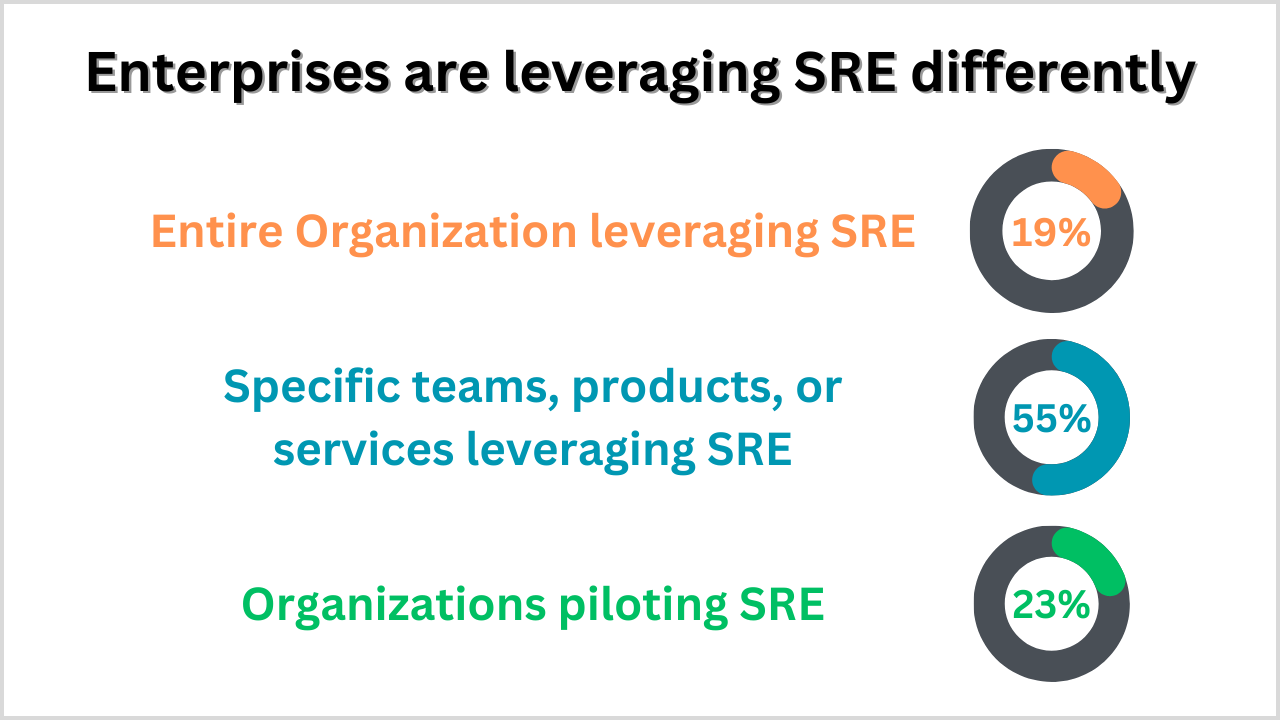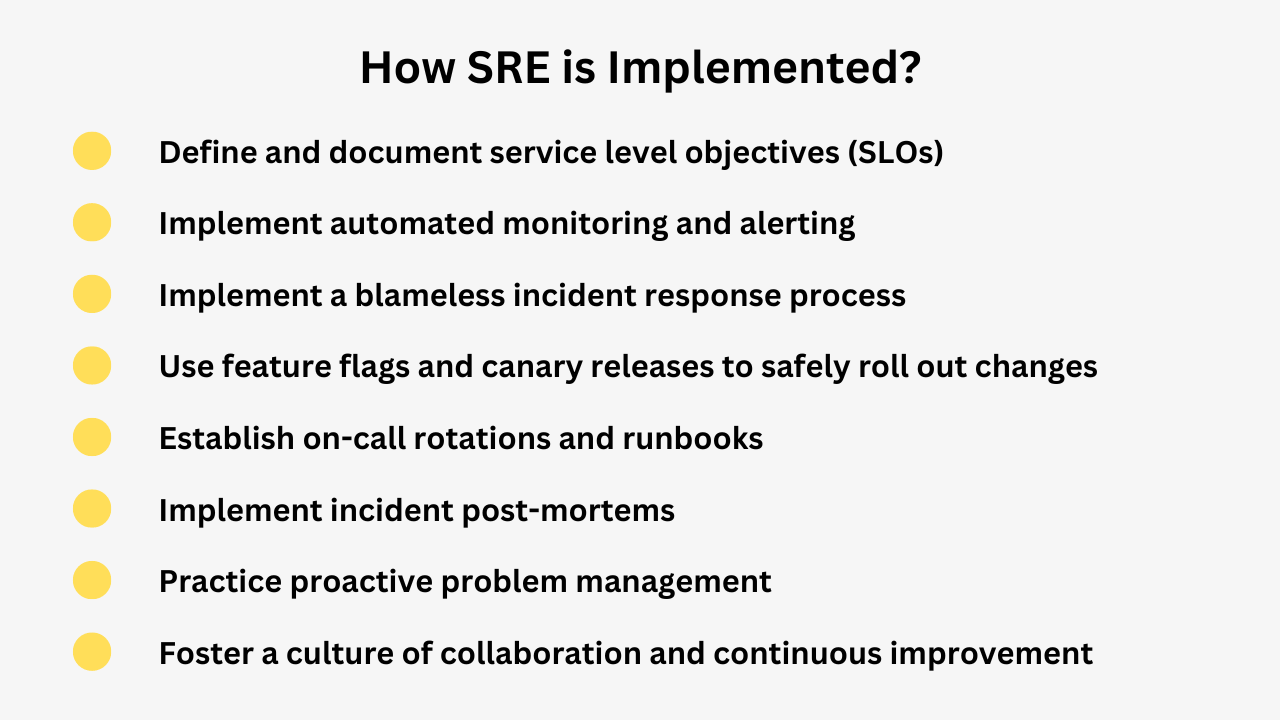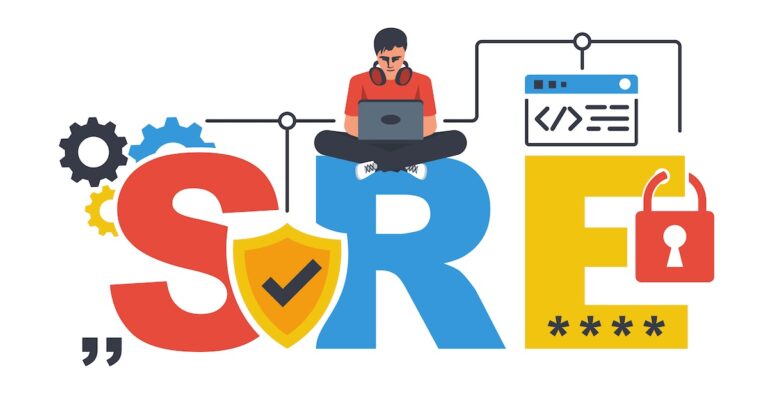In today’s time, IT and operations solutions are software-defined and service-oriented. Modern enterprise applications are virtualized, containerized, and highly automated. These are deployed on public, private, hybrid, and multi-cloud platforms. Henceforth, modern applications are technically and fundamentally different from how things have been a few years ago.
In order to meet the management and maintenance of these modern applications and technological solutions, site reliability engineering (SRE) was introduced which works as an extension to ITIL or especially to ITSM principles and practices that fail to sufficiently meet the demands of modern IT teams in different spheres.
Site reliability engineering introduced better and automated processes to deal with industry’s maturated and highly evolving IT operations and service management needs. Site Reliability Engineering services are now recognized as an advanced and better version to implement ITIL or ITSM solutions for cloud-focused organizations.
It is a combination of highly advanced practices and activities a vendor adopts to maintain the IT infrastructure to ensure workload availability. SRE includes software principles to solve operations and infrastructure management problems with code.
This blog is designed in such a way to share every aspect of site reliability engineering services that you must know if you are working in the IT and software industry and are planning to or have moved to a cloud model to run your applications. Stay tuned to the blog to learn more.
Let’s get started!
What is Site Reliability Engineering?
In a Global SRE Pulse 2022 report published by DevOps Institute, there is an encouraging adoption of the SRE model across enterprises. Companies are at a variety of states of SRE – from the entire organization leveraging SRE (19%) to specific teams, products, and services (55%), to piloting SRE (23%).

The results show the SRE model has increased the IT value from a business perspective and is an essential engineering function for digital transformation.
Site Reliability Engineering uses software development principles to operate and manage infrastructure to allow organizations to build reliable and scalable software applications and systems. It is used to improve the overall system reliability across critical categories including availability, reliability, efficiency, latency, capacity, change management, incident response, monitoring, and emergency response.
SRE focuses on internet-facing applications, hence ensuring optimum health of the applications and services including reliability, durability, data residency, speed or performance under load, consistency, and quality of results as similar features of reliability that consumers and customers of internet services implicitly expect.
Why Site Reliability Engineering Practices Were Required?
Site Reliability Engineering (SRE) practices were developed as a response to the limitations of ITSM and ITIL (Information Technology Infrastructure Library) in effectively addressing the challenges faced by modern software systems. It emphasizes implementing automation and systems thinking, with a goal of embracing risk and reducing toil, and increasing time for engineering work.
It helps the engineering team to balance the conflicting goals of availability and velocity in a cloud-based software environment. With the help of SRE principles and practices, site reliability engineers can address specific challenges and requirements of virtualized and containerized applications by getting visibility into complete systems and maintaining transparency.
Henceforth, we can consider site reliability engineering as an advanced version of ITSM (Information Technology Service Management) introduced by Google to manage and improve the quality of IT services and service management. Let’s try to understand the key differences between the two:
| ITIL | Site Reliability Engineering |
| Focus on value | Service Level Objectives |
| Start where you are | Embrace Risk |
| Progress iteratively with feedback | Monitoring |
| Keep it simple and practice | Simplicity |
| Optimize and automate | Eliminate Toil and Automation |
1. Scope
ITSM is a broader practice that covers all aspects of IT service delivery, including service design, service transition, service operations, and continual service improvement. SRE, on the other hand, focuses specifically on the reliability, availability, and performance of IT services.
SRE generally cares about end-to-end latency and throughput whether it’s storage systems, big data systems, or client-facing applications. In an SRE-based environment, all systems care about correctness; whether the returned answer was correct, the right data retrieved, or the right analysis done.
2. Approach
ITSM is typically process-driven and follows a structured approach to service delivery. Site reliability engineering service, on the other hand, is a more proactive and technical approach that emphasizes automation, monitoring, and continuous improvement of services. In a cloud environment, it is important to understand which behaviors really matter for a particular service and how to measure and evaluate those behaviors.
Henceforth, SRE uses service level indicators, service level objectives, and service level agreements (SLI vs SLO vs SLA). These measurements describe what you want to achieve from a service, design the system accordingly, and always be ready with metrics that help to address issues if something goes wrong and provide SRE teams confidence that a service is healthy.
3. Responsibilities
In ITSM, responsibilities are often divided between different teams, such as service desk, incident management, change management, and so on. In SRE, responsibilities are shared among a small, cross-functional team of engineers who design, operate, and maintenance services.
Technically, it is the developers, DevOps, system administrators, and operations team with coding skills that collaborate to become SRE team and resolve the issues of systems like reliability, stability, and availability.
4. Metrics
ITSM focuses on traditional service level metrics, such as availability, response time, and mean time to repair. SRE focuses on metrics that reflect the overall health and performance of services, such as error budgets, lead time for changes, and mean time to recovery.
These metrics help ensure the reliability, stability, and performance of a software system. To get precise metric values, site reliability engineering encourages the implementation of observability tools and practices.
What Are The Roles And Responsibilities Of Site Reliability Engineers?
Site Reliability Engineers (SREs) are responsible for ensuring the reliability, availability, and performance of a company’s software systems. Many think DevOps and SRE are similar and achieve the same business objectives. But we tell you, there is a difference between SRE and DevOps.
DevOps stands for what objective a business wants to achieve and SRE stands for how a business can achieve that objective. Let’s check the main responsibilities that site reliability engineers perform in a day-to-day job:
1) Assist DevOps, ITOps, and Support Teams
Site reliability engineers are in charge of proactively building and implementing services so that IT and support teams better perform their jobs. Right from adjusting monitoring and alerting to making changes in code in production, the SRE team is tasked with building a homegrown tool from scratch and eliminating weaknesses in software delivery or incident management.
2) Support Escalation Team and Help Fix Issues
A site reliability engineer also works alongside the escalation team and helps them fix issues. However, using evolving technologies will help set up mature operations processes and ensure system reliability and fewer critical incidents in production. With this evolution, companies experience fewer support escalations but the SRE team becomes a great source of knowledge that can be put to use to resolve challenges like routing issues, etc.
3) On-Call Support and Process Optimization
Similar to the above responsibility, site reliability engineers also take on-call responsibilities and help the team improve system reliability. They help in adding and automating processes and optimizing processes that support better real-time collaborative responses from on-call responders. Moreover, they also update runbooks, tools, and documentation to simplify on-call processes and make them informed to deal with future incidents.
4) Perform Post-Incident Reviews
As Google describes in its SRE guide and workbook, site reliability engineering is an extension to service management, SRE team also documents all scenarios related to incidents and performs post-incident reviews to understand what worked and what did not in handling an incident. They gather the learnings from the post-incident reviews and suggest or optimize some part of the SDLC or incident lifecycle to bolster the reliability of their service.
Also check:- Top 12 Site Reliability Engineering Tools
How SRE is Implemented in an Enterprise Environment?
Enterprises have to ensure the stability, reliability, and availability of their critical systems and applications. SRE helps organizations proactively identify and resolve issues before they impact users. SRE also helps organizations improve their overall efficiency, scalability, and security, which are critical for maintaining a competitive advantage in today’s fast-paced digital environment.
SRE enables a better understanding of the trade-offs between reliability and speed, allowing them to make informed decisions about how to best meet the needs of their users. Implementing SRE in an enterprise environment involves several steps, such as:

1. Define and document service level objectives (SLOs)
SRE team defines what “reliability” means for each service and sets specific, measurable goals for availability, latency, and other performance indicators. Start by thinking about what your users care about, not what you can measure. You can start working from desired objectives backward to specific indicators that work better than choosing indicators and then coming up with targets.
2. Implement automated monitoring and alerting
Today’s applications are deployed in a distributed environment. Hence to know how the application is performing or when it needs maintenance or replacement, it is important to establish monitoring to collect, process, aggregate, and display real-time quantitative data about a system. When you have data like query counts and types, error counts and types, processing times, and server lifetimes, it helps you act proactively in times of security breaches and enables you to make better decisions.
3. Implement a blameless incident response process
Have a well-defined process for responding to incidents, with clear roles and responsibilities, that emphasizes learning and improvement over blame. SRE helps you set up an effective incident management process that limits the disruption caused by an incident and helps you restore normal business operations as quickly as possible. In incident management, it is also important that everybody involved in the incidents knows their roles and doesn’t stray onto someone else’s turf.
4. Use feature flags and canary releases to safely roll out changes
Automation is not a solution to all the problems in IT solutions. To detect all release-related issues, you need to track real traffic hitting the service. By the time a release is ready to be deployed to production, your testing strategy should instill reasonable confidence that the release is safe and works as intended.
The best approach is to initially expose just some of your production traffic to the new release using a canary. Canarying allows the deployment pipeline to detect defects as quickly as possible with as little impact on your service as possible. Deploy changes incrementally and monitoring their impact on service performance and stability enables you to make the most from your development and deployment efforts.
5. Establish on-call rotations and runbooks
Establishing on-call rotations and runbooks provides a structured way for incident response. On-call rotations ensure that there is always someone available to respond to critical incidents, while runbooks provide detailed instructions on how to respond to common incidents and minimize downtime.
Both of these help to ensure that incidents are handled efficiently, effectively, and with minimal impact on users. Additionally, on-call rotations and runbooks also help to spread knowledge and expertise across the SRE team, making the entire organization more resilient. Having a team responsible for incident response provides clear guidance on how to respond to common incidents.
6. Implement incident post-mortems
Implementing incident post-mortems allows teams to learn from past incidents and make improvements to prevent similar incidents from happening in the future. Incident post-mortems provide an opportunity to review what went wrong, why it went wrong, and what could have been done better.
This helps to identify areas for improvement, both in terms of technical systems and processes and in terms of organizational culture and communication. By conducting regular incident post-mortems, SRE teams can continually improve their incident response processes, increase the reliability of their systems, and provide better service to their users.
Additionally, incident post-mortems also help to create a culture of transparency and accountability, which is key to building trust with users and stakeholders. Conducting thorough investigations into incidents, identifying root causes, and developing action plans help prevent similar incidents in the future.
7. Practice proactive problem management
Regularly reviewing systems and services helps identify and address potential issues before they become incidents. Practicing proactive problem management helps enable the same principle within an organization. Unlike reactive approaches, which only address problems after they occur, proactive problem management involves identifying and addressing potential issues before they become critical incidents.
This includes regular system monitoring, performance analysis, and capacity planning to identify potential problems, as well as implementing preventative measures to reduce the likelihood of incidents occurring. By being proactive, SRE teams can reduce the frequency and impact of incidents, improve the reliability of their systems, and provide better service to their users.
Additionally, proactive problem management also helps to create a culture of continuous improvement, as teams are constantly seeking ways to improve their systems and processes. This helps to ensure that the systems remain reliable and up-to-date, even as technology and user needs change over time.
8. Foster a culture of collaboration and continuous improvement
Fostering a culture of collaboration and continuous improvement ensures that teams are working together effectively and efficiently towards a common goal of delivering reliable and high-quality services to users. A culture of collaboration encourages teams to share knowledge, experience, and ideas, and to work together to resolve incidents and improve systems and build a more resilient and adaptive organization.
Continuous improvement, on the other hand, helps to ensure that SRE teams are always seeking ways to improve their systems and processes. Together, a culture of collaboration and continuous improvement encourages cross-functional teams to work together, share information, and continuously improve processes and systems. This, in turn, helps to build trust and credibility with users and stakeholders and to drive business value for the organization as a whole.
Bottom Line
In conclusion, Site Reliability Engineering (SRE) service is a critical approach to cloud-based deployment that helps organizations ensure high availability, scalability, and security. By implementing SRE best practices, enterprises can reduce downtime, improve incident response times, optimize cloud costs, and foster a culture of continuous improvement.
The key to success with SRE is to take a systematic, cross-functional approach that brings together developers, operations, and security teams to work towards common goals. By investing in SRE, organizations can realize significant benefits, from improved user satisfaction to reduced costs and enhanced competitiveness.




